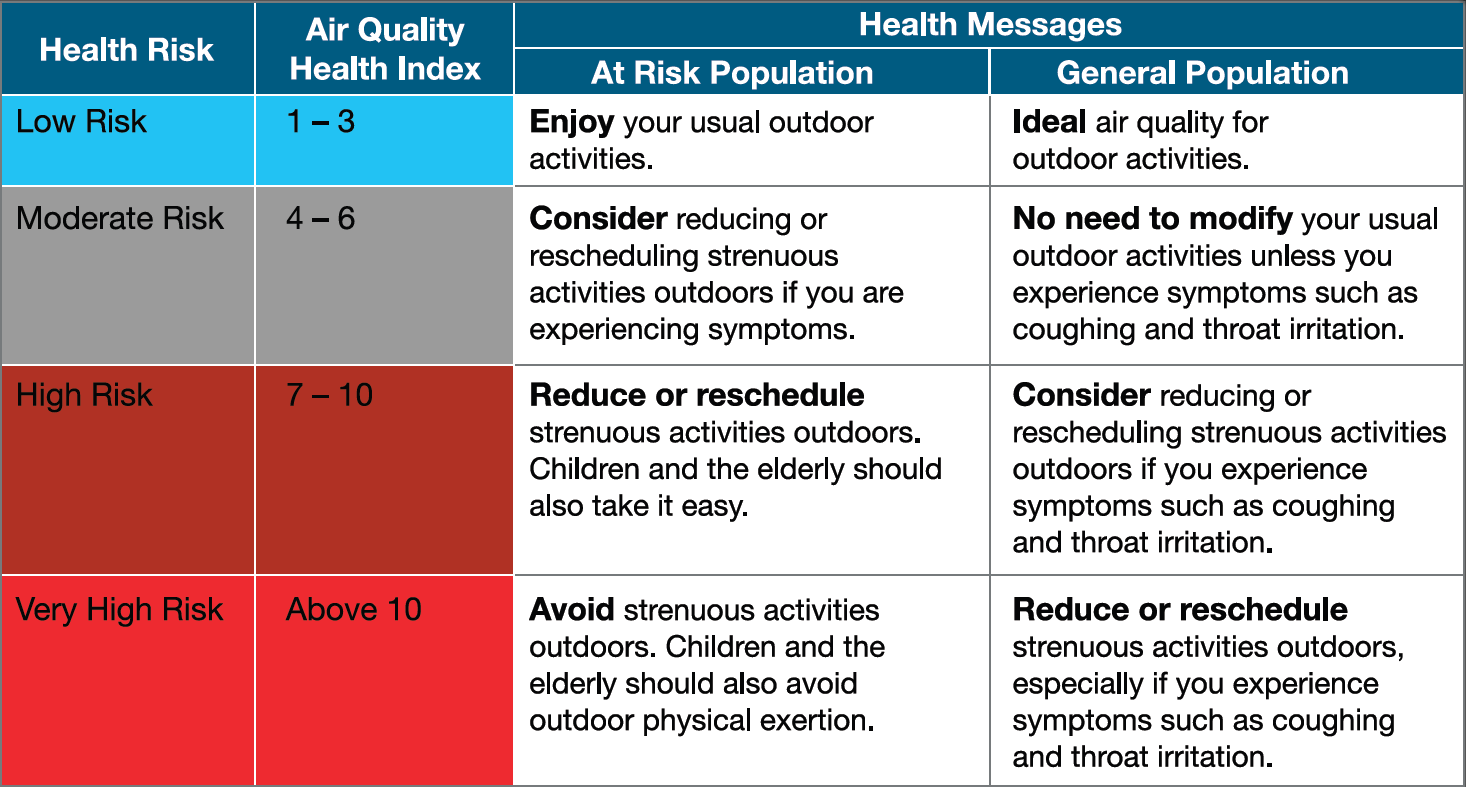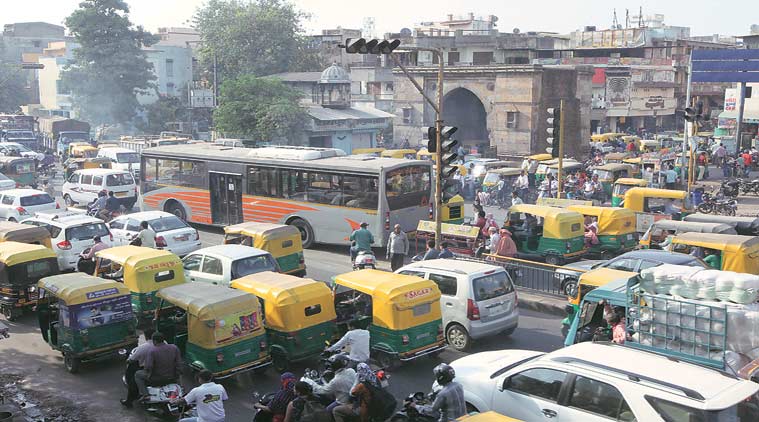This Indian City Is Taking Huge Steps to Protect Its Residents From Dangerous Air Pollution Levels
The first of its kind, Ahmedabad’s Air Action Plan has been developed using the best practices prescribed by both national and international civic experts, medical practitioners and community leaders.

Over the past decade, Ahmedabad has slowly been turning into a veritable gas chamber with noxious gases, particulate matter, and other pollutants breaching permissible limits.
A cursory glance at Gujarat Pollution Control Board’s 24×7 air monitoring system at Maninagar shows that the city’s monthly average of particulate matter and vehicle exhaust pollution exceeds both annual and daily permissible limits.
According to the World Health Organization (WHO), Ahmedabad ranks among the most polluted cities in the world. This deterioration in Ahmedabad’s air quality has also resulted in serious health concerns, including premature deaths, allergic effects, fibrosis, microbial infections, and increased emergency room visits for respiratory illnesses.
In an innovative step, several stakeholders in Ahmedabad have come together to unveil and implement a comprehensive Air Action Plan.
Developed by Ahmedabad Municipal Council (AMC) jointly with Indian Institute of Public Health (IIPH), Natural Resources Defence Council (NRDC) and Indian Institute of Tropical Meteorology (IITM), this first-of-its-kind plan is a decisive step by the city of Ahmedabad to protect its residents from the ill-effects of increasingly polluted air.
Ahmedabad’s Air Action Plan has been developed using the suggestions and best practices prescribed by civic experts, medical practitioners and community leaders, both national and international (Mexico City, Beijing and Los Angeles). It is based on two strategies — a city-wide air quality monitoring system, called Air Quality Index (AQI), and a broad public information and education campaign called Air Information & Response (AIR) Plan.
A system that is already operating in Delhi, Mumbai and Pune, the AQI is supported by technical expertise from the IITM’s System of Air Quality and Weather Forecasting And Research (SAFAR) programme. In Ahmedabad, it will be installed and operated through eight stations across the city, located in Pirana, Bopal, Raikhad, Navrangpura, Rakhiyal, Satellite, Chandlodiya and the airport.

AQI forms the core of the AIR plan that focuses on health risks of air pollution by increasing awareness, preparedness, information-sharing, and response coordination. This plan aims to build collaborative pathways to tackle air pollution through six steps:
- A pilot AQI alert system that links to an inter-agency coordination plan
- Engage with media through information, education and communication (IEC) materials to increase public awareness and communication outreach.
- Coordinate with educational institutions for a school flag programme – schools to display coloured flags corresponding to AQI levels for each day.
- Create and distribute pamphlets, hoardings, videos, SMSs for vulnerable population groups such as children, pregnant women, outdoor workers and the elderly.
- Engage with private and public medical professionals to map out strategies for public health. This aspect will especially focus on Urban Health Centres (UHCs) and link workers, who frequently work with at-risk populations and can provide early diagnosis of asthma and other respiratory illnesses.
- Initiate research to identify exposure control and mitigation measures for the future
You May Like: Fortify Yourself Against Pollution by Including These Antioxidant Rich Foods in Your Diet
In addition to the AMC website, people can download the SAFAR-AIR app on their smartphones to access the real-time ambient air quality. Those without smartphones can also access this information through a toll-free telephone number twice a day. The city will also put up digital display boards that display current air quality data to citizens in populated areas.
Interestingly, the Air Action Plan is modeled on the Heat Action Plan that was first implemented by Ahmedabad in 2013 and has now been scaled to 11 cities across India. The first such plan in South Asia, its aim was to protect communities from heat stress and longer, more intense heat waves that were becoming increasingly frequent due to climate change.

After a deadly heat wave hit Ahmedabad in May 2010, the AMC partnered with IIPH, Public Health Foundation of India, NRDC, Mount Sinai School of Medicine, and Rollins School of Public Health to create a comprehensive early warning system, information-sharing network and preparedness plan for extreme heat events.
Other than this, Ahmedabad-based startup Oizom has also been unleashing the power of Internet of Things (IoT) on air quality monitoring. The only Indian startup to be chosen in Sparklabs’ new accelerator batch for Smart Cities and IoT, this clean-tech company has been co-founded by Ankit Vyas, Sohil Patel and Vrushank Vyas (all engineers from Vadodara).
Their first product under the aegis of Oizom, Polludrone is a fully solar-powered, low-cost, ambient air quality monitor that measures various parameters of pollution like PM2.5, PM10, SO2, NO2, CO, O3, VOCs, hydrocarbons and noise. Other than showing location-based air quality levels, it also provides data-driven suggestive actions for registered users. Moreover, it does not require any infrastructural changes.

Oizom, in association with India OpenData Association, has also started an open-source community project to create awareness about air quality amongst citizens. Under this, a DIY kit called AirOwl (that anybody above the age of 10 can easily assemble) is given to interested citizens to help them build their own personal air quality monitoring device.
Oizom has already shipped AirOwl kits to over 50 citizens and installed 50 Polludrones in cities across India so far. Their app, Air Quality India, has also seen more than 6,000 downloads on Android and IoS. The startup is now working to create an advanced version of Polludrone that shall cater to special needs such as UV rays monitoring and odour control for places like sewage treatment plants.
Feature Image: For representational purposes only
To contact Oizom, click here.
Also Read: Did You Know You Can Make an Air Purifier at Home? Try This Super Simple One!
Like this story? Or have something to share? Write to us: [email protected], or connect with us on Facebook and Twitter.
NEW: Click here to get positive news on WhatsApp!
This story made me
- 97
- 121
- 89
- 167
Tell Us More
We bring stories straight from the heart of India, to inspire millions and create a wave of impact. Our positive movement is growing bigger everyday, and we would love for you to join it.
Please contribute whatever you can, every little penny helps our team in bringing you more stories that support dreams and spread hope.




















